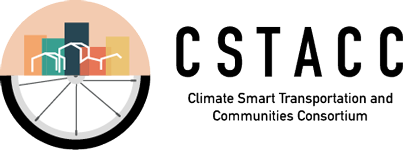Accelerating the Transition to Zero-Emission Vehicles (ZEVs)
Transitioning to ZEVs (e.g., plug-in and fuel cell electric vehicles) is a centerpiece of the state’s commitment to reducing GHG emissions and local pollution. Governor Brown’s Executive Order B-48-18 calls for increasing on-road ZEVs to 5 million by 2030, and installing 200 hydrogen fueling stations and 250,000 chargers by 2025. To accomplish this goal and to assure that all Californians benefit, UCLA and UC Davis will co-lead a statewide research and policy initiative that addresses key issues and challenges to accelerate ZEV purchases with a focus on disadvantaged and middle-income populations. Key research areas are described below:
Increasing Use of ZEVs by Low-Income Households
A UCLA-led team will evaluate policies and incentives that target low-income households (including the Enhanced Fleet Modernization Plus-Up Program), electric vehicle charging subsidies and public investments, shared mobility pilot programs, and agricultural worker vanpools in the SJV. Researchers will inventory clean transportation programs at the state level and within each CCSC regional case study area. UCLA will document direct financial assistance being offered to low-income Californians, conduct focus groups to understand how state and regional programs are currently serving low-income Californians, assess strategies to enhance access to programs, and recommend improvements to these programs.
Report: Supporting Lower-Income Households’ Purchase of Clean Vehicles: Implications from California-Wide Survey Results (Policy Brief)
Charging Infrastructure Planning Tools for Communities and Regions
To support the rapid expansion of plug-in electric vehicles (PEV), local and regional governments need help in determining how many chargers and of what type should be placed where. Current tools do not address the specific needs of used car buyers, vehicles used for ride-sourcing/TNCs, multi-unit dwellers, or PEVs used by public and private fleets. UC Davis will update and enhance the Plug-In and Electric Vehicle Research Center’s PEV Planning Toolbox to consider these aspects of the PEV market and to improve the sensitivity of these tools to local and regional conditions. Updates will be made to three specific tools: 1) PEV Fleet Analysis Tool, 2) Charging Needs Tool, and 3) Fast Charging Tool.
Report: Using the Plug-in Electric Vehicle (PEV) Planning Toolbox to Understand Market Growth in California
